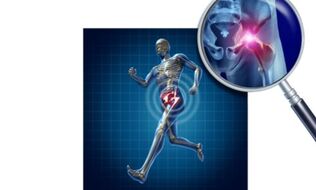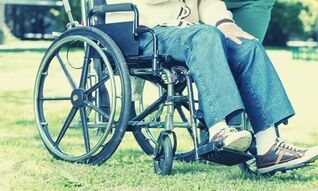Coxarthrosis (osteoarthritis of the hip joint) is a degenerative-dystrophic disease of the hip joints, accompanied by damage to the articular cartilage, bone tissue and periarticular structures and leading to permanent loss of joint function.

Osteoarthritis of the hip joints is one of the most difficult dystrophic pathologies of the musculoskeletal system with financial assistance. The disease quickly leads to a decrease in physical activity, a change in the nature of a person's movements, often - to the inability to move independently and damage. Decades ago, coxarthrosis was considered one of the "diseases of old age, " but since the beginning of this century, a high incidence has been reported among young and middle-aged patients for a variety of reasons.
Statistics
Osteoarthritis is the most common pathology of the musculoskeletal system and occurs in 70% of adults; coxarthrosis - in 25% of patients with orthopedic profile. Up to 30% of patients diagnosed with coxarthrosis are disabled, have a disability and need joint replacement surgery.
The disease occurs from 20-25 years, the average age of onset of symptoms is 37-39 years, progresses with age, which is associated with the presence of concomitant pathologies of the musculoskeletal system, bone loss and more. In middle-aged patients the prevalence of coxarthrosis is 11%, in persons over 85 years - 35%. In children and adolescents, coxarthrosis is a consequence of congenital joint dysplasia, which occurs in 1% of newborns.
Reasons for development
The causes leading to the development of osteoarthritis of the hip are of different importance depending on the age and general level of health of each patient:
- congenital disorder of the normal anatomical shape of the joints - deformities of the femoral neck, congenital dislocation of the hip joint;
- deformation of the femoral head due to degenerative (age-related) processes in the joint;
- traumatic injuries - fractures, dislocations, non-physiological, including sports, loads on the joints;
- infectious and inflammatory diseases - tuberculosis, osteomyelitis and others; rheumatoid arthritis and other systemic diseases (allergic, metabolic);
- If the exact cause of the disease has not been established and it has developed on its own, the term "idiopathic coxarthrosis" is used.

Symptoms of Coxarthrosis of the Hip
Pain is the main symptom. Their severity and the addition of other manifestations of coxarthrosis depend on many factors, in particular body weight, lifestyle, age. In the initial stage, patients notice moderate, intermittent pain in the hip joints, which occurs mainly during exercise and goes away on its own. Then the pain begins with light loads, does not disappear at rest, "shoots" in the knee joint. The mobility of the joint or both joints is limited.
Patients are forced to limit physical activity, lameness, "duck gait" appears. At the last stage there is excruciating constant pain, mobility in the hip joints is sharply limited, walking is possible only with a cane or crutches, patients need round-the-clock care, are disabled.
Development
As the disease progresses, the hip joint gradually collapses and completely loses its function.
There is a thinning of the articular cartilage and a slight narrowing of the joint space. The bone tissue under the cartilage becomes denser. At this stage, the pain appears after exercise.
In the second stage, the destruction of cartilage progresses. Marginal osteophytes - bone growths - appear. The narrowing of the joint space progresses. Pain occurs when walking, limiting joint mobility (contracture).
In the last stage of coxarthrosis the bone growths are extensive, flattening and subluxation of the femoral head occurs, the joint space practically disappears. Constant severe pain, joint mobility is significantly limited.

Diagnosis of coxarthrosis
If you have groin pain, limited joint mobility and other symptoms listed above, you can consult a therapist, but the leading medical professional who diagnoses and treats osteoarthritis of the hip is an orthopedic traumatologist.
The main method for diagnosing coxarthrosis is radiography. This is an informative method that allows you to accurately assess the structural changes in the affected joints. Due to its cost-effectiveness and affordability, joint radiography is still widely used. A more informative (but expensive) method is X-ray computed tomography. Nuclear magnetic resonance (MRI) of the joints is also used. It is performed to detect coxarthrosis at the stage before the X-ray (when there are no changes in the X-rays), as well as for differential diagnosis.
Treatment of coxarthrosis of the hip joint
In the early stages of coxarthrosis, with a favorable course of the disease, conservative methods using physiotherapy techniques are preferred, including kinesitherapy, massage and physiotherapy, in particular water and mud therapy, a complex of physiotherapy. Among the physiotherapeutic techniques that have proven to be good, magnetic therapy can be distinguished.
Magnetic therapy for coxarthrosis is used for various purposes. Under the influence of a magnetic field in the body, regeneration processes are activated, including in the bone tissue, blood circulation is improved. The last point is especially important, because in osteoarthritis there is insufficient blood supply to the joints, and hence a lack of nutrients to maintain the normal condition of cartilage and bone tissue, and this can worsen the pathological changes in the joint. Improving blood circulation in the hip joints helps to restore the flow of necessary nutrients to the joints, activates metabolism in bone and cartilage, which is the basis of the positive effect of magnetic therapy in coxarthrosis.
Also, due to the intensification of metabolic processes and the release of some biologically active substances, the anti-inflammatory and analgesic effect of magnetic therapy is observed.

Dietary therapy is recommended to normalize metabolism and reduce body weight. Along with the rational diet it is possible to use auxiliary preparations (drugs and biologically active pharmaceutical supplements), which affect the metabolic and restorative processes in the musculoskeletal system - based on glucosamine and chondroitin (chondroprotectors), minerals and vitamins, standardized plant extracts. .
Preparations with anesthetic and anti-inflammatory effect, namely NSAIDs, GCS, muscle relaxants and some others, are used at all stages of coxarthrosis to eliminate pain and inflammation. Their use should be strictly dosed, under the supervision and prescription of a doctor.
In the second or third stage of the disease, depending on the patient's symptoms and condition, it is recommended to continue conservative treatment or surgery. Currently, various surgical methods are used, the best results (complete restoration of joint function and human mobility) are achieved with total arthroplasty - replacement of the hip joint.
Drug therapy, dietary therapy and lifestyle changes, physiotherapy and balneotherapy are also recommended, both in the case of surgery and in a conservative approach. Physiotherapy techniques in complex treatment can reduce the amount of drugs and the load on the body, promote faster recovery after surgery and improve the overall condition of the patient. In particular, magnetic therapy shows good efficacy and tolerability, even in exhausted, elderly patients and people with chronic diseases of the nervous and cardiovascular systems.

Prevention of osteoarthritis of the hip
Early detection of coxarthrosis at an early stage is very important as a preventive measure. If you find symptoms (pain, limited mobility) in the hip area, you should consult a doctor - you can first visit a therapist, and then an orthopedic surgeon. The therapist may prescribe initial pain management, recommend chondroprotectors, and the orthopedist will prescribe special treatment.
Lack of overweight and normal physical activity, correction of working conditions and lifestyle in general, as well as timely treatment of diseases that can become one of the causes of coxarthrosis (inflammatory, infectious diseases ofjoints, congenital anatomical defects of the joints, degenerative dystrophic diseases).





































